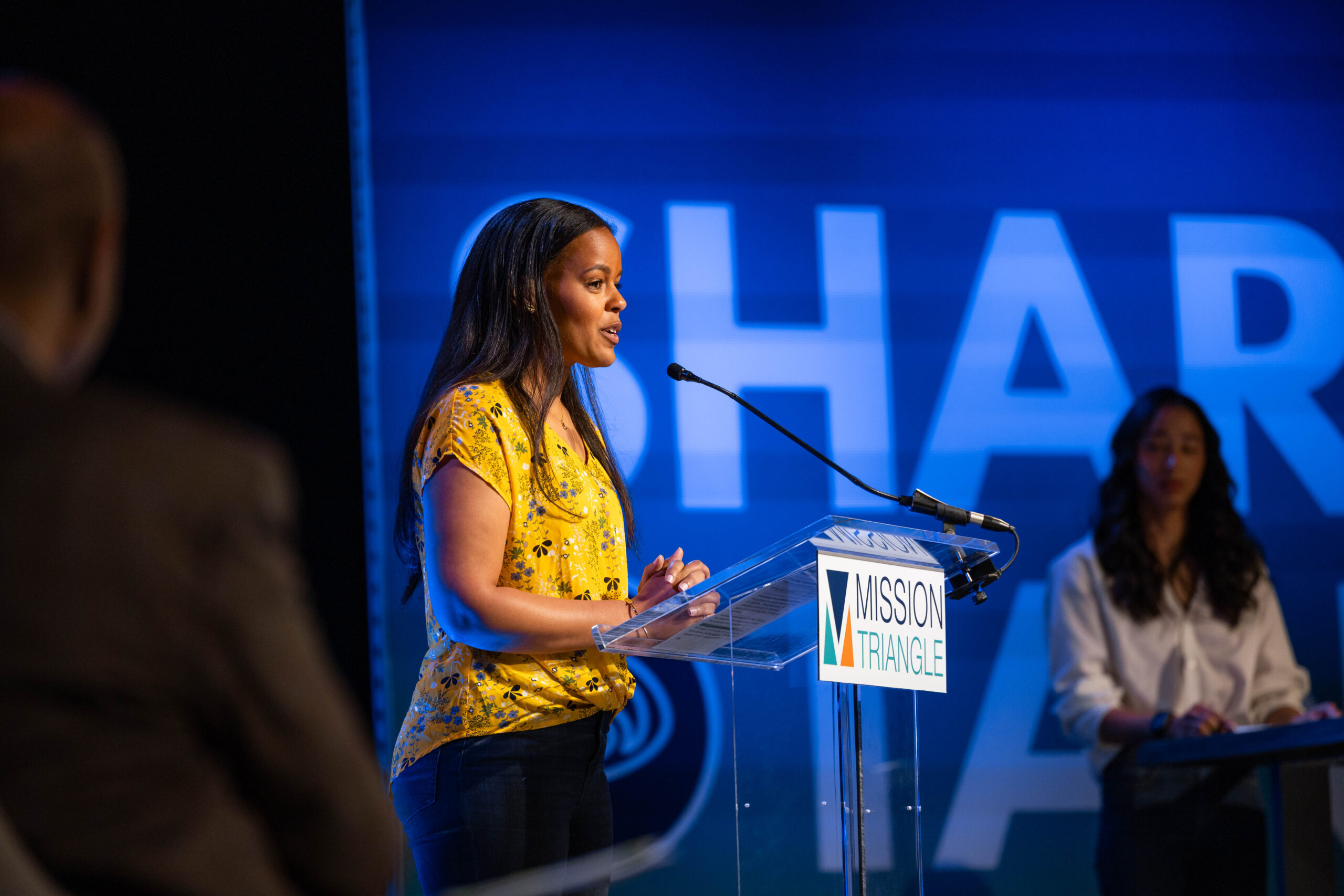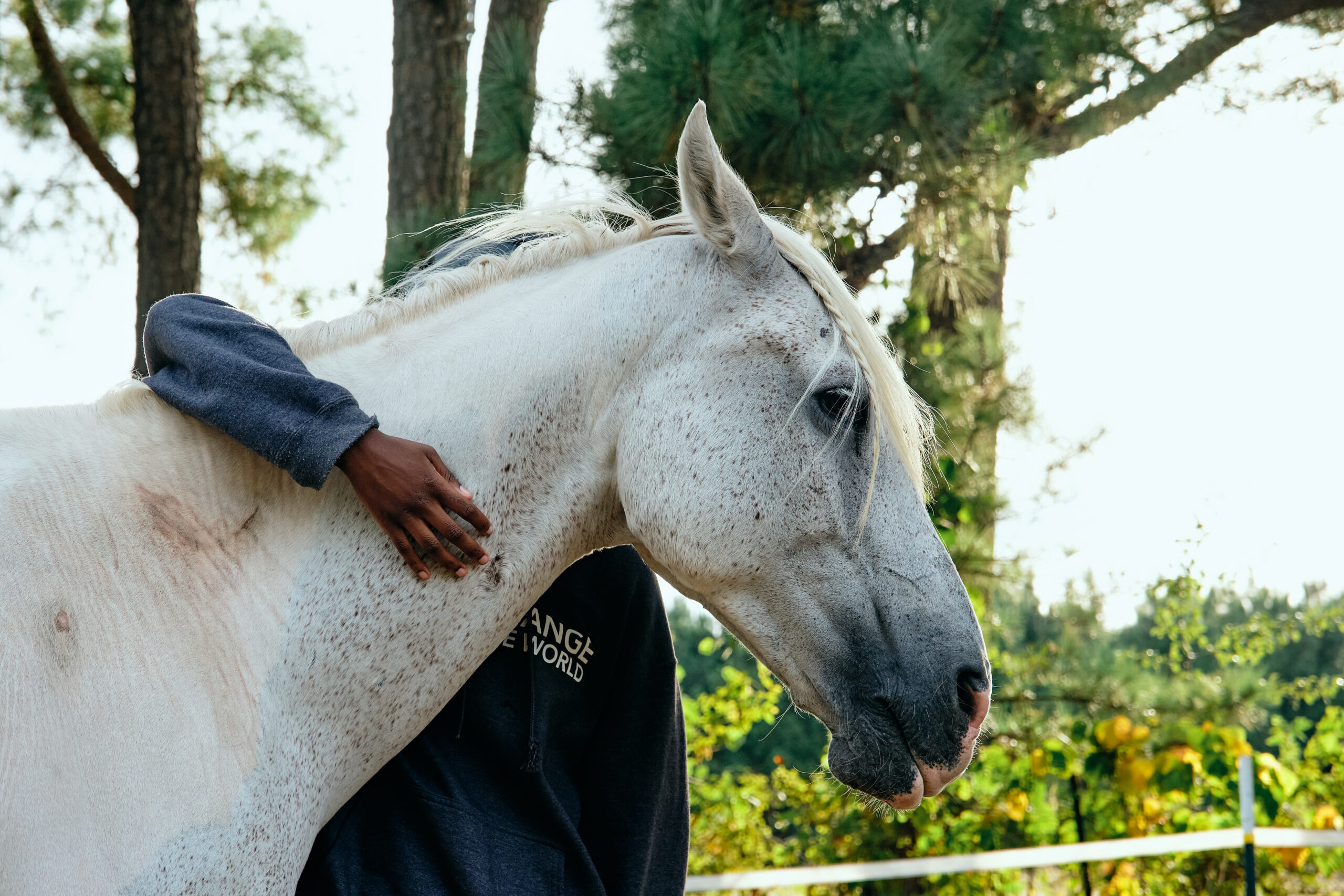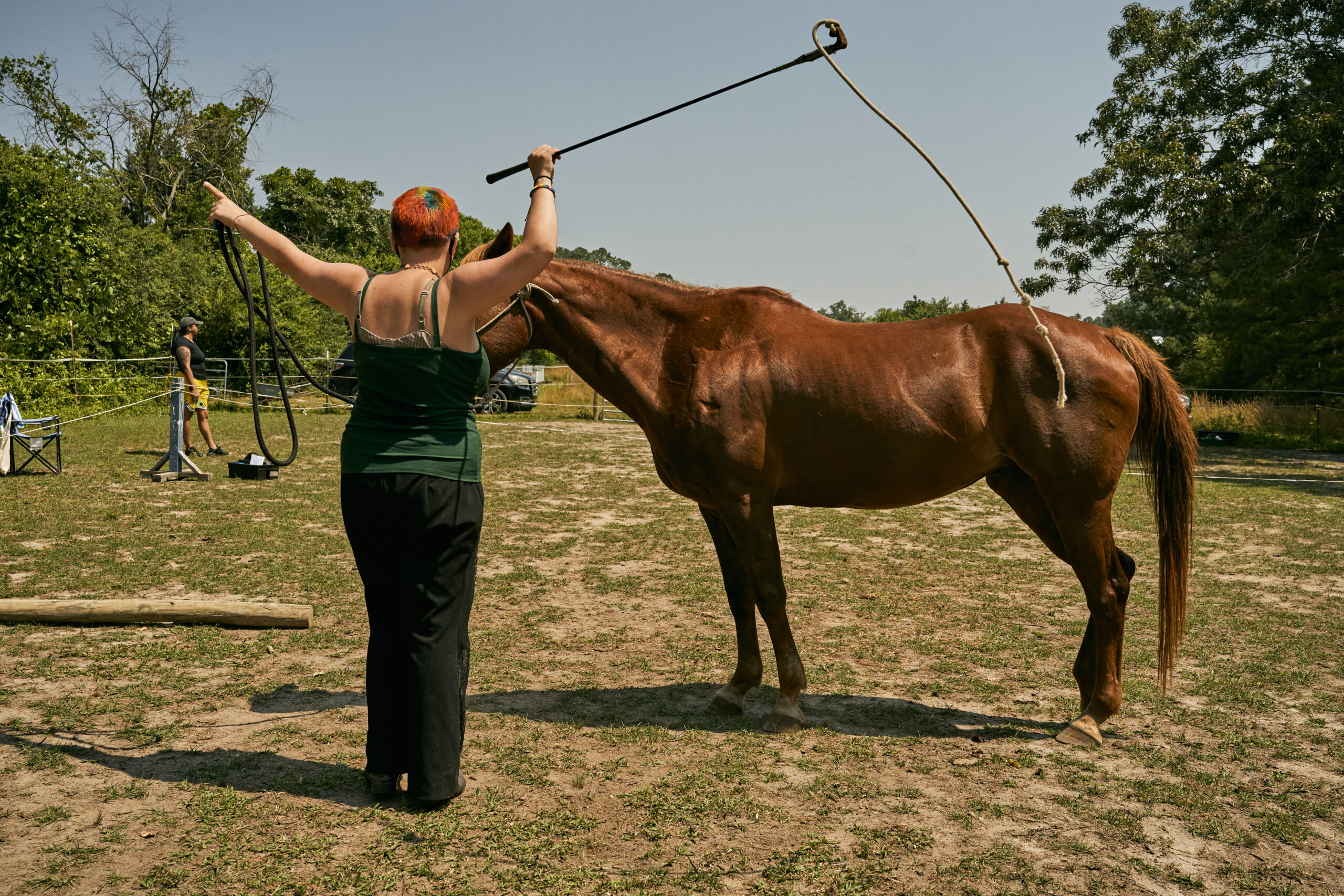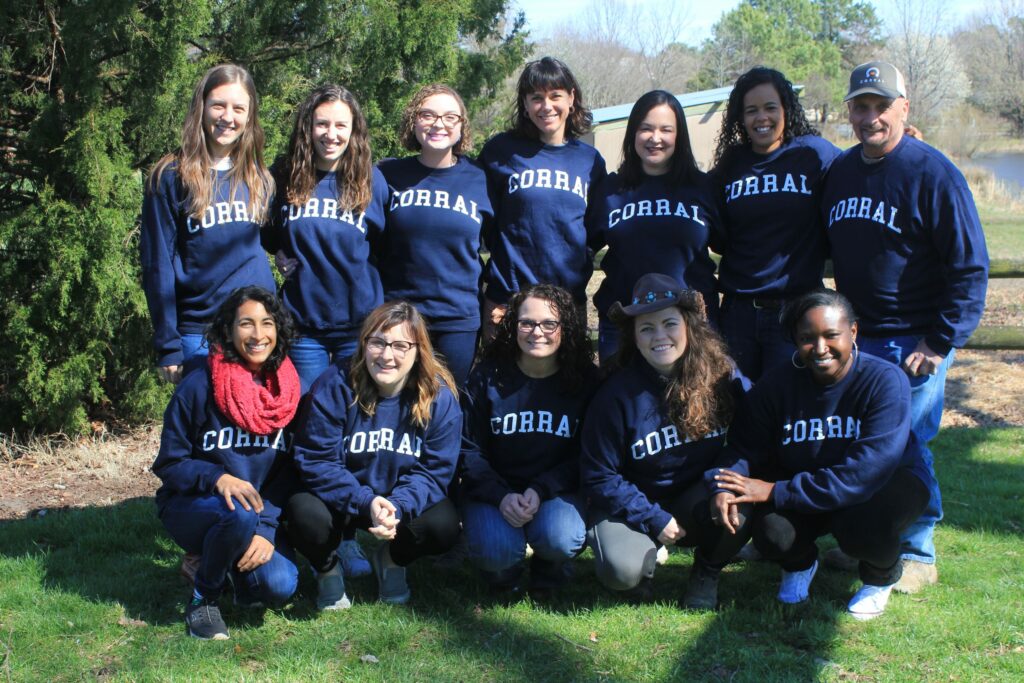By Miya Hargraves, Mental Health Professional Intern
Horses have long been recognized for their ability to foster healing, growth, and personal development. Whether used for therapy or education, equine-assisted programs provide powerful opportunities for individuals to build confidence, develop emotional awareness, and strengthen life skills. However, there is often confusion about the distinction between Equine-Assisted Psychotherapy (EAP) and Equine-Assisted Learning (EAL).
EAP – Equine-Assisted Psychotherapy: An Alternative
EAP (Equine-Assisted Psychotherapy) is a form of experiential therapy where the participants learn about themselves and others by participating in activities with the horses. Horses in EAP are used for growth, learning, and healing. Through these experiential activities, clients improve their self-esteem, build confidence, work on their social communication skills, better their relationships and gain better social awareness (Sullivan, 2024). EAP is a therapeutic approach that incorporates horses into mental health treatment. It is facilitated by a licensed mental health professional, often in collaboration with an equine specialist. EAP sessions typically involve ground-based activities (rather than riding) that encourage emotional processing, self-reflection, and coping skills.
EAP provides clients with a deeper understanding of themselves and their experiences. It is used to address a wide range of mental health and personal development challenges, including Post-Traumatic Stress Disorder (PTSD), trauma, anxiety, eating disorders, addiction and recovery, depression, and the effects of physical, emotional, and sexual abuse. EAP also supports individuals dealing with autism, Attention-Deficit Disorder (ADD) & Attention-Deficit Hyperactivity Disorder (ADHD), grief, attachment and boundary issues, relationship difficulties, anger management, and coping with cancer or catastrophic illness diagnosis.
"EAP is a powerful and exciting way to access genuine feelings and conditioned patterns and get to the source of both discomfort and wellness. The lessons learned penetrate deeply - facilitating shifts in behavior and perspective in a way that bypasses the defenses of the mind."
- TB, HorsePlay MHP
EAL – Equine-Assisted Learning
This approach is ideal for children, adolescents, adults, and groups looking to develop essential tools and strategies for making positive life choices. It offers a valuable opportunity to experience the benefits of EAL without the need for psychotherapy. These sessions may be conducted by educators, coaches, or equine professionals, rather than mental health practitioners. It is also an excellent alternative for individuals who may be hesitant about traditional therapy in an office setting, providing a more engaging and comfortable environment for personal growth.
This alternative method moves beyond intellectual awareness and allows clients to experience tangibly how their behaviors, attitudes, and beliefs impact themselves and others. Through structured group activities with horses, clients can reflect, discuss, and journal. Participants have the opportunity to identify patterns, examine their behavior, and move toward change.
EAL helps individuals build essential life skills and improve personal and professional development. It can address:
- Leadership skills
- Communication and interpersonal skills
- Teamwork and collaboration
- Problem-solving and critical thinking
- Self-confidence and self-awareness
- Emotional regulation
- Resilience and adaptability
- Boundaries and personal space awareness
- Decision-making and responsibility
- Conflict resolution
- Stress management
- Goal setting and motivation
Why Horses?
Horses tend to respond to our very existence, to our way of being in the very present time—the moment. The relationship with the horse allows clients to observe their issues from a new perspective, enabling them to recognize patterns and make meaningful changes. Once a positive shift is achieved in the arena, clients can apply these insights to their daily lives, finding practical solutions that work for them, in addition to changing their way of being in relationships.
Horses are known to be very much like humans in that they are social animals. Each horse has its defined role within their herds like a human being in a job. Horses have very distinct personalities, attitudes, and moods. An approach does not fit every horse. In other words, what works for one horse may not work for the other. Because the horse is sensitive to non-verbal communication, they respond to what messages the client gives them at the moment.
Both EAP and EAL harness the intuitive nature of horses, providing immediate feedback and insight. Understanding the distinction between these approaches ensures that individuals can choose the program best suited to their needs, whether for mental health support or personal and professional growth.
At CORRAL Riding Academy, we are dedicated to creating a safe and supportive environment where teenage girls in high-risk situations can build confidence, improve communication, and develop essential life skills. We are thankful for all of our horse partners who support our teens’ transformational growth and healing.
References:
– Difference between EAP and Eal. Helping Hands Rescue and Equine Therapy, Inc. (n.d.). https://helpinghandshorse.org/difference-between-eap-and-eal/
– What is EAP & EAL?. HV HorsePlay. (n.d.). https://www.hudsonvalleyhorseplay.com/about-equine-experiential-services





